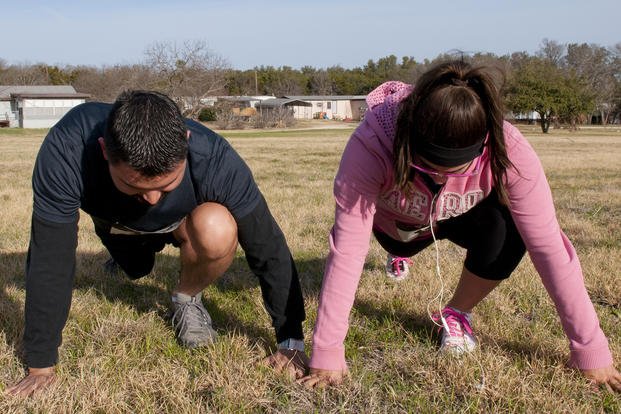As a veteran, you likely know you need physical activity to be healthy and strong. But if it’s difficult to leave your home because of injury, time or other limitations, it can discourage you from getting exercise.
The good news is that there are plenty of options to exercise from your own home. The Centers for Disease Control and Prevention recommends that adults get a minimum of 150 minutes of moderate-intensity aerobic activity per week. That may sound like a lot, but it’s about the same amount of time it takes to watch one movie or five half-hour television shows.
Keep in mind that 150 minutes doesn’t have to be all at once. Try breaking it up into five 30-minute sessions -- or even shorter if you have to. As long as you’re physically moving for 10 minutes, it counts as exercise.
Consider whether you want to exercise alone or in a group, and incorporate an activity that interests you. Try dancing, cycling on a stationary bike, running or walking on a treadmill, or following an exercise video in your living room. You also should engage in muscle-strengthening activities, such as lifting weights or climbing stairs, at least twice a week.
Here are the steps to consider as you organize your home-based active lifestyle:
1. Assess your physical capabilities and goals.
It’s a good idea to see a health-care provider before starting an exercise program. They can tell you how to start adding physical activity safely to your life and can refer you to physical therapists or exercise physiologists, if needed. These professionals can help you refine your exercise plans and work through any limitations you may have.
Keep in mind that many people with wheelchairs, walkers and canes still can exercise. Whether it’s chair yoga, seated stretches, balance exercises or stationary cardio work, you can adapt exercises to work within your physical limitations.
2. Choose equipment wisely.
While a full home gym would be great, few of us have that much extra space (or money). Keep the size and cost of equipment in mind. Equipment goes from very small, like kettlebells and jump ropes, to large, such as elliptical trainers and fully stocked in-home gyms.
Some exercise equipment, like yoga mats, resistance bands and free weights, can be quite affordable. Shop around to compare prices and find the best deals. Your health-care team may have some recommendations.
3. Track your progress.
Tracking your progress is rewarding and motivational. First, compare the way you look and feel to before you got started. Are you moving easier, exercising longer or getting less winded going up the stairs? You also can track how much exercise you do in a notebook or with a fitness app. Consider buying an digital activity tracker that can count your daily steps, active minutes and miles logged.
4. Stick with it.
Know that exercise isn’t always easy. Starting an exercise program can be daunting, and it may take time to reach your goals. Enlist help from fitness professionals if you’re not making progress as quickly as you’d like. Remember that even small steps are still steps forward.
Nancy Kupka Ph.D., RN, is passionate about sharing home health advice as a writer for Walgreens, where you can find walkers to help veterans with physical limitations get around more easily inside and outside the home. Kupka is also the daughter of a World War II cavalry officer and a Korean War nurse.
Although it is intended to be accurate, neither Walgreen Co., its subsidiaries or affiliates, nor any other party assumes for loss or damage due to reliance on this material. Walgreens does not recommend or endorse any products, opinions or other information that may be mentioned in the article. Reliance on any information provided by this article is solely at your own risk.
Want to Learn More About Military Life?
Whether you're thinking of joining the military, looking for fitness and basic training tips, or keeping up with military life and benefits, Military.com has you covered. Subscribe to Military.com to have military news, updates and resources delivered directly to your inbox.














